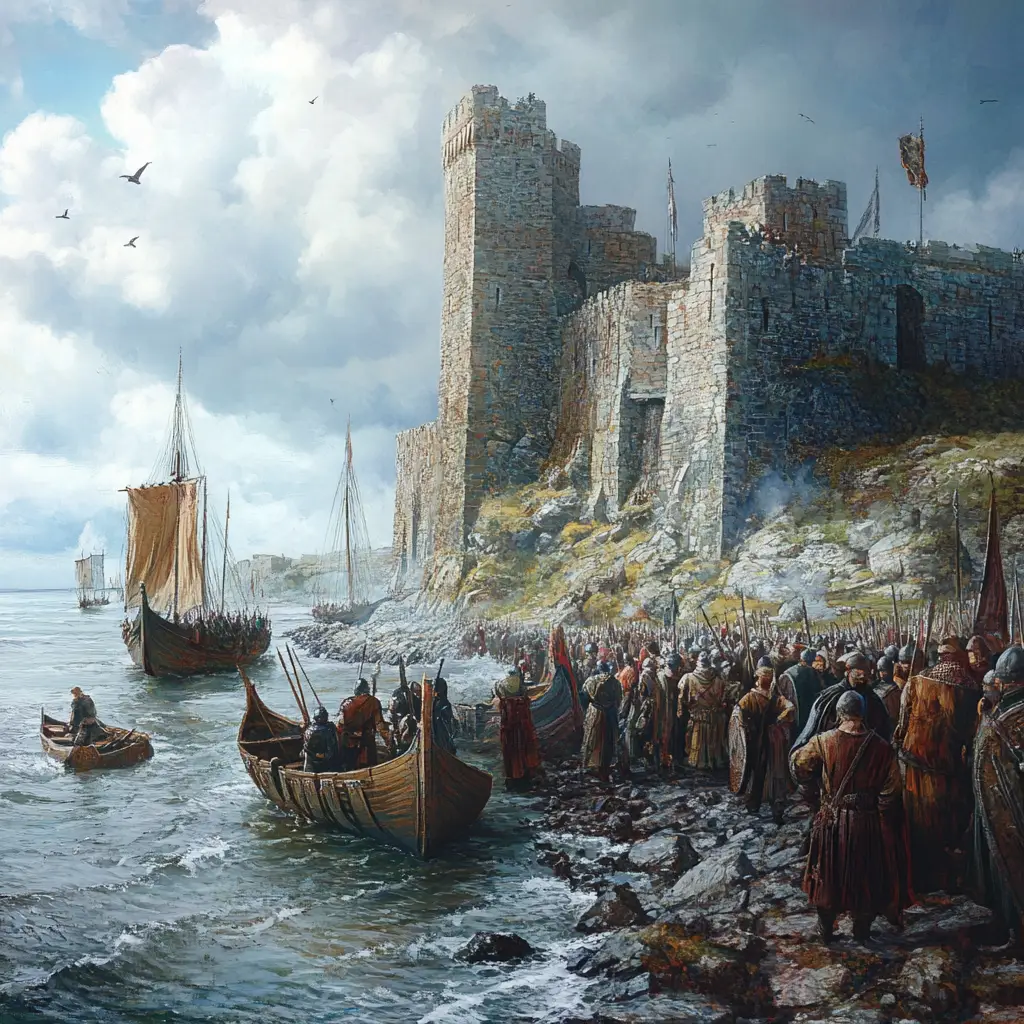The Vikings Raid at Lindisfarne – A Turning Point in History
Overview
The Viking raid at Lindisfarne, in 793 AD, is widely regarded as the beginning of the Viking Age, a period of exploration, conquest, and cultural exchange that shaped Europe’s history. This dramatic attack on a peaceful monastic community in Northumbria shocked the Christian world, symbolizing the fearsome reputation of the Norse warriors and marking the start of nearly three centuries of Viking expansion.
What Happened at Lindisfarne?
The Sacred Monastery
Lindisfarne, also known as Holy Island, was a centre of Christian worship and learning off the northeastern coast of England.
The monastery, founded by Saint Aidan in 635 AD, was renowned for its beautiful manuscripts, such as the Lindisfarne Gospels, and its holy relics.
The Viking Attack
On June 8, 793 AD, Viking longships approached the shores of Lindisfarne.
The raiders attacked the defenseless monks, plundering treasures, killing or enslaving many, and destroying much of the sacred site.
Historical accounts describe the event as a divine punishment, with chroniclers like those of the Anglo-Saxon Chronicle condemning the attack as an act of savagery.
Why Was Lindisfarne Attacked?
Wealth of the Monastery
Monasteries like Lindisfarne were repositories of gold, silver, and other treasures, making them attractive targets for Viking raiders.
Lack of Defence
The monastery was located on an isolated island and had no means to defend itself, making it an easy and lucrative target.
Strategic Location
Lindisfarne’s position along the English coast made it an ideal first strike for the Vikings as they tested their raiding strategies.
Significance of the Raid
Beginning of the Viking Age
The raid at Lindisfarne is often considered the start of the Viking Age, a period marked by Norse exploration, trade, and conquest.
A Cultural Shock
The attack on such a sacred Christian site sent shockwaves through Europe, leading to widespread fear of the “Northmen.”
Norse Expansion
The raid demonstrated the Vikings’ seafaring prowess and sparked further invasions of England, Scotland, Ireland, and beyond.
Historical Legacy
The destruction of Lindisfarne remains a pivotal symbol of Viking brutality but also marks the beginning of their complex interaction with European societies, eventually leading to cultural exchanges and settlements.
The Viking Perspective
From the Norse perspective, the raid was not just a random act of violence but part of their culture of exploration, survival, and resource acquisition. For the Vikings, raiding was a way to gain wealth, honour, and resources, with no moral conflict in attacking foreign lands.
Legacy of Lindisfarne
The Revival of Lindisfarne
Despite its destruction, Lindisfarne monastery was rebuilt, and its spiritual significance continued.
The relics of Saint Cuthbert, a revered monk and bishop of Lindisfarne, were preserved and became central to Christian pilgrimage.
Viking Influence
The raid heralded the beginning of Norse settlement and integration into European society, leaving a lasting impact on language, culture, and governance in England and beyond.
Did You Know?
The Lindisfarne Gospels, one of the most famous illuminated manuscripts, survived the Viking raid and is preserved as a masterpiece of early medieval art.
Lindisfarne is still known as Holy Island, attracting visitors who seek to understand its rich history and spiritual heritage.




